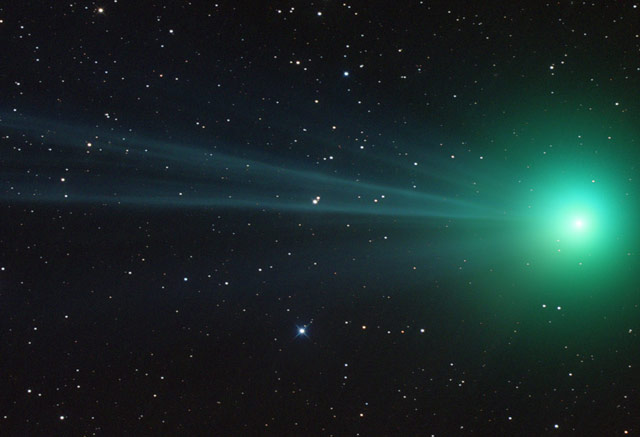Hi everybody
Here's the latest article from the Astronomy site at BellaOnline.com.
Distances in Space
You wouldn't want to know the distance from Boston to San Francisco in inches. And for the same reason, miles aren't very useful in space. After all, it's 26 trillion miles to the next nearest star. So how do astronomers deal with these enormous distances?
http://www.bellaonline.com/articles/art29665.asp
And something new for educators.
Teaching Moon Phases and Eclipses
Why does the Moon seem to change shape? If eclipses happen when the Sun, Moon and Earth are all lined up, why don't they happen every month? If you're an educator, you may need to understand why and explain it to children. Here are some online resources to help you out.
http://www.bellaonline.com/articles/art32832.asp
*Skywatch*
(1) The moon was full last night. I also looked out my window (southeast) and saw a brilliant Jupiter. It would have dominated the sky but for the moon. Names for the August full moon: since it's before the harvest, Green Corn Moon or Grain Moon, but also Sturgeon Moon.
(2) It seems the Sun is finally getting active again. There has been auroral activity in the northern US states and Canada. Find out more from www.spaceweather.com.
(3) The next week or so should provide some good passes of the International Space Station for North America and Europe. There are a number of them after dark, but not when working folk are in bed. It's a lovely sight – rather as though Jupiter were floating through a field of stars.
You can find out at what times the ISS will be overhead for your city at this NASA site: http://spaceflight.nasa.gov/realdata/sightings/. Or for predictions for the ISS, satellites of various kinds, as well as sky maps, register at: http://www.heavens-above.com/.
*Anniversaries*
(1) It's seven years ago today that NASA launched the Spitzer Space Telescope. Spitzer is an infrared telescope, which means that it is collecting valuable data which ground-based telescopes can't. Most infrared radiation is absorbed by the Earth's atmosphere. http://www.spitzer.caltech.edu/
Last week I forgot to mention the anniversary of the start of the longest space mission ever ever. On August 20, 1977 Voyager 2 was launched. On August 25, 1981 it flew past Saturn and on August 25, 1989 it flew past Neptune. It is still the only probe to have visited Uranus and Neptune. When I last looked at the website http://voyager.jpl.nasa.gov/ Voyager 2 was 93 times further from the Sun than we are - about 14 billion kilometers. It's still sending data, but it takes about twelve hours for its messages to reach Earth.
That's all for this week. Wishing you clear skies.
Please visit astronomy.bellaonline.com for even more great content about Astronomy.
To participate in online discussions, this site has a community forum all about Astronomy located here -
http://forums.bellaonline.com/ubbthreads.php?ubb=postlist&Board=323
I hope to hear from you sometime soon, either in the forum or in response to this email message. I welcome your feedback!
Do pass this message along to family and friends who might also be interested. Remember it's free and without obligation.
astronomy Newsletter








